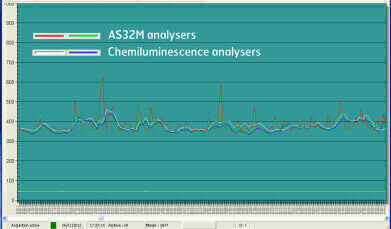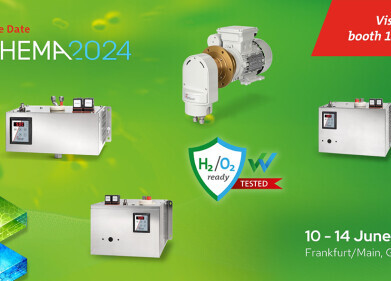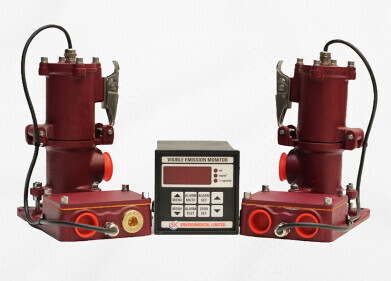Air Monitoring
Measuring the Ambient NO2 Without Conversion
Feb 12 2013
Nitrogen oxides NOx are pollutants that may have particular impact in terms of greenhouse gases, acidifying air etc. These pollutants have increased significantly since 1950 with the massive development of transport and industries. It therefore becomes necessary to provide measurements against these pollutant gases, and to have confidence in the reliability of the results. Currently, 60% of emissions of NO and NO2 are mostly produced by traffic emissions. NO is an unregulated pollutant because it is considered much less toxic than its oxidation product, nitrogen dioxide. This is why the French and European laws are more stringent and impose limits on exposure, concentration, and flow rate.
The chemiluminescence - reference method for the measurement of nitrogen dioxide (NO2) and oxides of nitrogen (NOx) is based on the reaction of nitric oxide (NO) with Ozone (O3): NO molecules react with O3 to form activated NO2* molecules. If the volumes of sample gas and excess ozone are carefully controlled, the light level in the reaction chamber is proportional the concentration of NO2 in the gas sample. NO + O3 = NO2* + O2
These activated NO2* molecules return to their fundamental state by emitting light hv radiation, measured by the instrument: NO2* = NO2 + hν.
For measuring the NO2 concentration with a chemiluminescence based analyser, several operations are required: 1. Measurement of the NO concentration in the ambient air in the " NO channel ", 2. Conversion of the NO2 contented in the air in NO using a catalytic or photolytic furnace, 3. Measurement of the new NO concentration called NOx chemiluminescence in the "channel NOx" and 4. Calculation of the NO2 concentration (NO2 = NOx – NO).
This operation is performed in the majority of cases with a single chamber and a single detector by cyclical switching between channels NOx and NO. As a result, the samples corresponding to NO and NOx channels are sampled successively at intervals of only a few seconds. The measurement of the NO2 resulting from the difference between NOx and NO channels, but the NOx and NO concentrations in the gas sample may have changed during these intervals.
When measuring the NO and NO2 concentrations by the standard method, an overestimation or an underestimation of NO2 with a possible appearance of negative NO2 values can be generally observed. The result is also depending on the duration of the measurement cycle. If part of the light energy produced by chemiluminescence is lost in collisions with other molecules present in the sample, such as moisture, an underestimation of the sample may occur. Conversely, a risk of overestimating of NO2 concentrations if other species are converted to NO2 in the NO catalytic oven can occur. Finally there is a degree of error due to the conversion efficiency of the furnace.
In applications like the analysis of road traffic pollution, particularly in urban canyon streets, the use of an analyser capable of fast, accurate and direct (without conversion) measurement of the NO2 is primordial because the NO emitted at cars’ exhaust pipe is oxidised rapidly to NO2. The additional presence of vortices in this type of street-related crosswinds and traffic and the ventilation behaviour in different street canyon configurations makes the measurement with the usual technique of chemiluminescence difficult.
Designed to alleviate potential disadvantages of the chemiluminiscence method and to provide the most accurate value for NO2 concentration measurements, the new AS32M analyser from Environnement S.A (France) is perfectly suited for detecting short events with high precision, no chemical conversion required, not sensitive to other nitro-containing species and with no Toxic Gas Emissions. The unique automatic Cavity Attenuated Phase Shift (CAPS) nitrogen dioxide monitor operates as an optical absorption spectrometer, utilising a blue light-emitting diode (LED) as a light source, a sample cell incorporating two high reflectivity mirrors at 450 nm and a vacuum phototube detector.
Its efficiency is based on the fact that nitrogen dioxide (NO2) is a broadband absorber of light in visible region of the spectrum. Typical levels of detection (2σ noise levels) may reach 0.1 parts per billion. The instrument offers a completely linear response at concentrations up to several parts-per-million of NO2. The monitor can be rack mounted and requires only a source of NO2-free air for periodic (minutes to hours) baseline measurements.
Finally, the procedure aiming the designation by the US-EPA of the AS32M’s measurement principle as equivalent method for NO2 measurements is ongoing: it has been assigned the application number 12-334-11.
Some of the exclusive benefits include: “True NO2” measurement (i.e. without conversion), Ultra sensitive, Highly selective, Short response time measurement, Reduced maintenance (no converter, no O3 generator, no cleaning of the chamber), Reduced operational cost.
Some of the main applications are: Roadside air pollution and street canyon effect, Tunnel Monitoring, Traffic Pollution Control, Continuous indoor and outdoor air quality monitoring, Industrial fence-line monitoring, Measurement Campaigns and Monitoring Studies.
Digital Edition
IET 34.2 March 2024
April 2024
Gas Detection - Biogas batch fermentation system for laboratory use with automatic gas analysis in real time Water/Wastewater - Upcycling sensors for sustainable nature management - Prist...
View all digital editions
Events
May 05 2024 Seville, Spain
May 06 2024 Minneapolis, MN, USA
May 13 2024 Munich, Germany
May 15 2024 Lund, Sweden
May 15 2024 Frankurt-am-Main, Germany


















